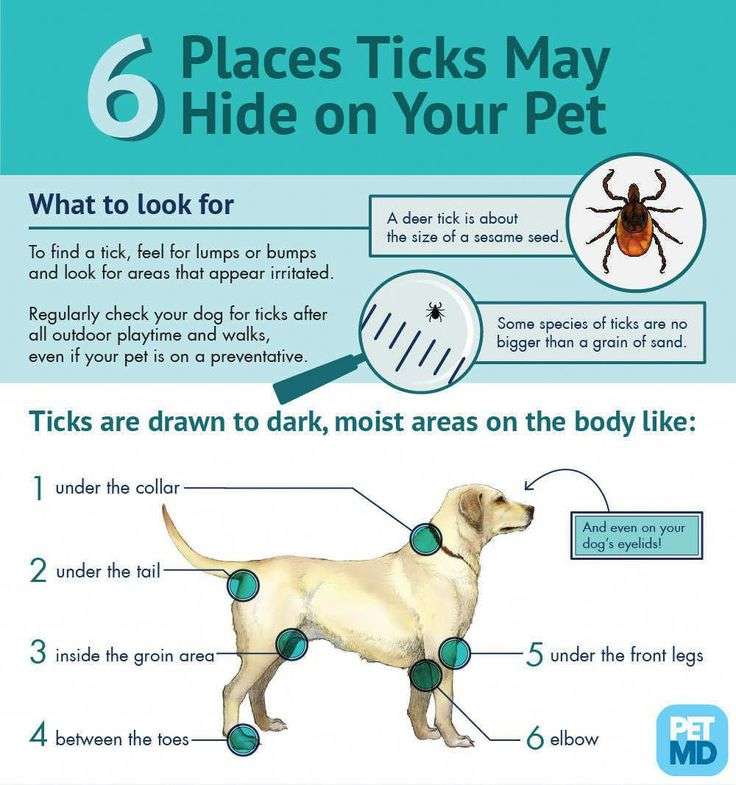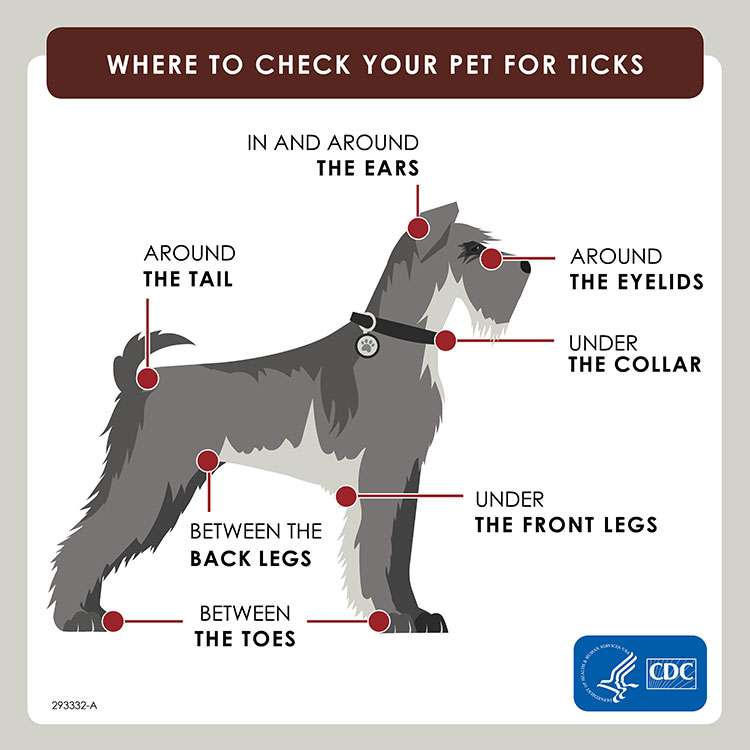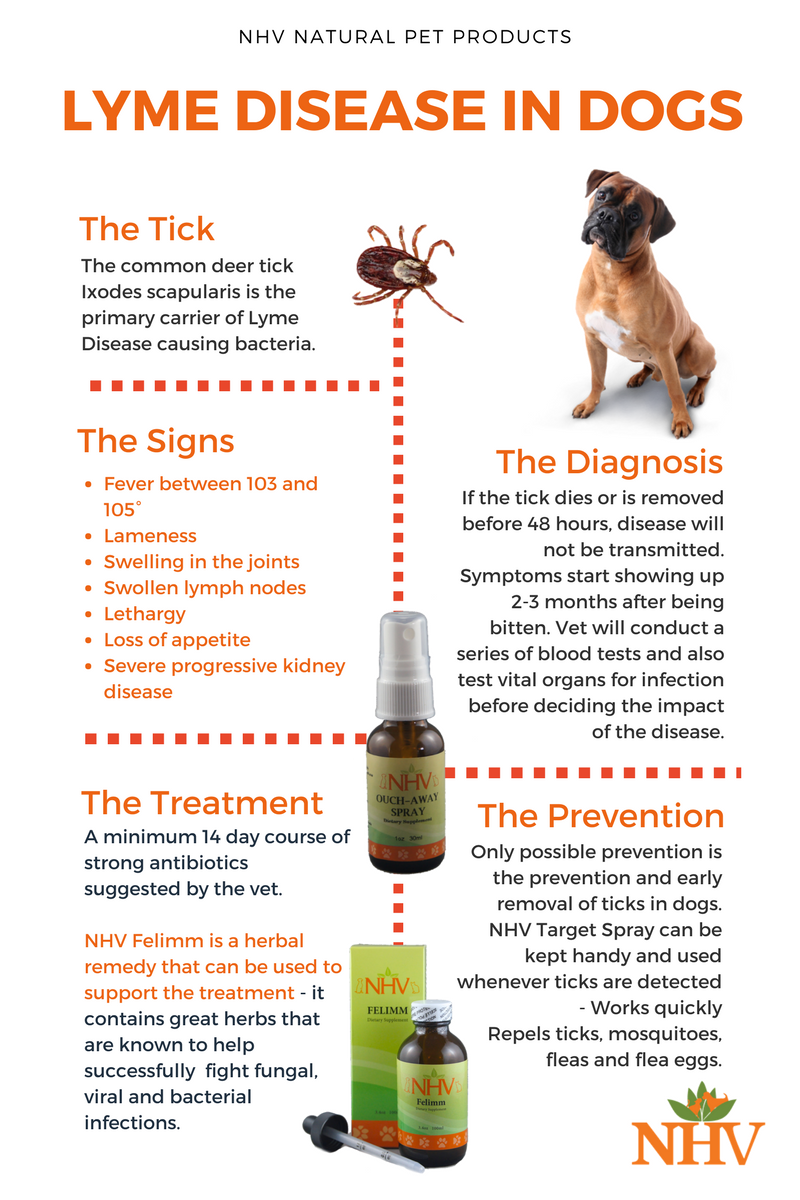Diagnosing Lyme Disease In Dogs
You will need to provide a thorough history of your dog’s health to give your veterinarian clues as to which organs are being affected.
Clinical diagnosis of Lyme disease is usually confirmed with a positive blood test for Lyme along with the clinical signs associated with Lyme disease.
Its important to note that tests can take 4-6 weeks to show up as positive after exposure, which is why veterinarians will use a combination of diagnostics to diagnose your dog:
-
Blood chemistry tests
-
X-rays and tests specific to diagnosing Lyme disease
-
Fluid from the affected joints may also be drawn for analysis
Which Antibodies Does The Vaccine From Merial Induce
It is a recombinant vaccine based on Osp A. Vaccinated animals should develop high antibody levels to OspA and maintain negative antibody levels to the remaining two antigens. Infected/non-infected animals can be identified based on OspC and OspF antibody values. Detection of the early Lyme infection stage is possible after using this vaccine.
Clinical Signs Of Lyme Disease
There is a myriad of clinical signs which may or may not be present in dogs. Some dogs may exhibit no clinical signs whatsoever. Unfortunately, this does not mean the body isnt being affected negatively by the bacteria. Be sure to contact your vet if your dog is experiencing any of these symptoms:
- Lethargy
- Painful and/or swollen joints
- Intermittent and/or limb-shifting lameness – Example: lame on the right front leg one day, lame on the left rear leg the next day, not lame at all the following day
- Fever
- Inappetence
- Swollen lymph nodes
- Untreated, Lyme disease can cause significant damage to the kidneys , heart , and nervous system .
Read Also: How To Fight Lyme Disease
What Are The Three Stages Of Lyme Disease In Dogs
While there is only one type of Lyme disease in dogs, the illness usually progresses through three stagesearly localized Lyme, early disseminated Lyme and late disseminated Lyme. Early localized Lyme is very difficult to detect in dogs, as it typically manifests as fatigue, fever and joint and muscle pain. An infected dog may not actively show any of those signs.
Similar symptoms characterize the next stage but on a more aggressive level. This stage is when your dog may start limping or losing their appetite. Late disseminated Lyme disease in dogs can affect the organs, brain and spinal cord.
Dog parents may also mistake other illnesses as Lyme disease. Tick-borne ailments with similar symptoms to Lyme include Rocky Mountain spotted fever, babesiosis, ehrlichiosis or anaplasmosis. All these illnesses can cause fever, loss of appetite and lethargy identical to Lyme disease.
Giving Your Dog Antibiotics

You May Like: How Do You Feel When You Have Lyme Disease
How Can These Costs Be Reduced
Getting pet insurance for your dog prior to any illness will protect you from the high costs of treating your pets Lyme disease or any other potential emergency, injury, or illness you and your pup might encounter throughout their life. Most pet insurance companies will cover blood tests, treatment, medications, and potentially vet exam fees as long as you chose a plan for your furry friend before they were diagnosed with Lyme disease
How Is The Lyme Multiplex Assay Different From The Assay My Veterinarian Can Perform
Your veterinarian can perform a quick assay in-house that checks for antibodies against only one B. burgdorferi surface protein. The in-house assay cannot detect early infection, cannot determine vaccination status, and does not quantify the amount of antibodies your animal is producing. Quantifying antibodies is an important measure for successful treatment and to confirm cure from Lyme disease.
Recommended Reading: Cutter Lyme Disease Tick Test
How Else Can I Help My Dog With Lyme Disease
Year-round flea and tick prevention is highly recommended when it comes to preventing Lyme disease in dogs. Even if your dog has received the Lyme vaccine, giving them preventive medicine is still necessary to help prevent the transmission of other diseases commonly carried by fleas and ticks. At Petco, we have many preventive solutions available, including collars, topical options and chewable pills. Some chewables also contain ingredients to help prevent heartworm and other internal parasites so that you can take care of multiple necessary treatments at once. Whatever type you chooseand no matter where you liveits highly recommended that you administer a monthly flea and tick preventive medicine.
If your pup has kidney problems resulting from Lyme disease, they may benefit from dog food formulated for renal support. Some dog vitamins and supplements may help ease symptoms like inflammation in the joints and digestive problems. Consult your veterinarian about other types of treatment for Lyme in dogs.
The side effects of Lyme disease in dogs are usually severe and can be deadly if not immediately addressed. Its important to take this illness seriously. Take your dog to the vet as soon as you notice symptoms, follow all treatment instructions carefully and keep an eye out for recurring signs. Lyme disease can be a lifelong illness, but your pup can still live a comfortable life if diagnosed and treated early.
Control And Prevention Of Lyme Disease In Dogs
Lyme disease is a bacterial infection that is spread through the bite of an infected tick. The infection can cause serious health problems in dogs, including lameness, fever, and even death. There are several steps that pet owners can take to protect their dogs from Lyme disease, including using tick prevention products and checking for ticks after outings in wooded areas.
Fortunately, This disease can be prevented and controlled with proper diagnosis and treatment. Most cases of Lyme disease in dogs occur in the spring and summer when the weather is warm and sunny. These conditions favor dog ticks, which are responsible for transmitting the disease. Infected ticks can be found on grassy areas, parks, wooded areas and even sandy beaches. Ticks are also capable of surviving for many years without feeding. If you live in a region where ticks are prevalent, it is important to be vigilant and check your dog regularly for ticks. Keep in mind that dogs can get the disease even if they have not been exposed to the tick.
Also Check: Side Effects Of Lyme Disease In Humans
Prevention Of Lyme Disease
|
The diagnosis of Lyme disease is often based on the signs and history. For example, a veterinarian might suspect Lyme disease in a dog with recent lameness, a mild fever, and a history that includes possible exposure to ticks. Standard blood studies are not very helpful in diagnosis because the results tend to fall within normal ranges despite signs of infection. However, these tests may be important in order to rule out other causes of disease. Antibodies against the disease-causing bacteria can often be detected 4 to 6 weeks after the initial infection and help confirm the diagnosis.
Treatment For Lyme Disease In Dogs
Lyme disease is a bacterial infection that is transmitted through the bite of an infected tick. The symptoms of this disease in dogs can be very subtle and may not be recognized until the disease has progressed. Early diagnosis of Lyme disease is important to prevent long-term health problems. The most common treatment is the use of a combination antibiotic which can be given orally or intravenously. Treatment typically lasts for 4 to 6 weeks. However, some dogs develop chronic Lyme disease, which can be difficult to treat. Early diagnose of Lyme disease are important to prevent long-term health problems for your dog.
You May Like: Best Lyme Clinic In The World
Can Lyme Disease Also Affect People
Lyme disease is a bacterial infection that is most commonly spread through the bite of an infected black-legged tick. While it is most often associated with people who spend time outdoors in wooded and grassy areas, it can also affect people who do not regularly spend time in these types of environments.
Lyme Testing And Diagnosis

When a dog is exposed to B. burgdorferi, his immune system will make antibodies in response to the outer surface proteins on the spirochete. Lyme tests generally look for antibodies to these outer surface proteins. It takes at least three to four weeks for antibodies to develop after a dog has been exposed testing before that time may produce false negative results. Testing positive for Lyme does not mean that the dog actually has or will develop clinical signs of Lyme disease it just means that the dog has been exposed.
The SNAP 4DX Plus test offered by IDEXX evaluates whether or not a dog has antibodies to the C6 peptide, a chain of amino acids present in the spirochete. This test is appropriate to answer the question, Has my dog been exposed to B. burgdorferi? with a yes or no answer. To run the test, your veterinarian will need a few drops of your dogs blood. It takes only eight minutes to run, so you can know your dogs results before leaving the clinic. This test also checks for two other tick-borne diseases , and heartworm. Results should not be affected by Lyme vaccination.
Two tests offered by Abaxis VetScan Canine Lyme Rapid Test and VetScan Flex4 Rapid Test also evaluate whether or not the dog has been exposed to Lyme. There is potential for this test to give a false positive if the dog has received a Lyme vaccine that includes the OspC protein.
Also Check: How Long Can A Person Live With Lyme Disease
Dogs And Lyme Disease
Symptoms of Lyme in dogs may not be evident to owners for two to five months, or even a year or more. These symptoms include:
- Lameness Recurring , intermittent, and/or shifting-leg
- Swollen, warm, or painful joints
- Stiff walk with arched back
- Difficulty breathing
- X-ray
- Lyme serology
The most common treatment for Lyme in dogs is antibiotics, such as doxycycline or other specific dog antibiotics. Treatment usually lasts for at least four weeks and may be accompanied by anti-inflammatory drugs to help with arthritis symptoms.
However, symptoms sometimes return even after treatment. In some more severe cases, kidney failure can occur. The length and nature of treatment will depend on the severity of your dogs condition.
The earlier the diagnosis and treatment, the better the chances are that your dogs symptoms will fully clear up without complications or organ failure.
How Is Lyme Disease In Dogs Diagnosed
Your veterinarian will assess your dogs symptoms, give them a physical, and typically also do bloodwork to determine their diagnosis. Bloodwork is necessary to confirm a Lyme diagnosis because many symptoms of Lyme disease can be mistaken for any number of other conditions.
Lyme disease in dogs is diagnosed through a blood test, Dr. Margit Muller, veterinarian and , tells Pumpkin. She further explains, This test detects the presence of antibodies to Borrelia burgdorferi, the bacteria strain that causes Lyme disease.
A combination of two blood tests is typically done: the C6 Test and the Quant C6 Test. The C6 Test detects antibodies, and is a preliminary blood test that can be run in most veterinary hospitals. If that test is positive, then a secondary test, the Quant C6 test, can be run to confirm infection and if treatment is needed. It takes a while for antibodies to show up in the blood after a dog is infected, so it is not recommended to test dogs earlier than four weeks after a tick bite.
Recommended Reading: Lyme Literate Doctors In Ct
Cdc Supports The Development Of New Tests
New tests may be developed as alternatives to one or both steps of the two-step process. Before CDC will recommend new tests, they must be cleared by the Food and Drug Administration . For more details, see: Recommendations for Test Performance and Interpretation from the Second National Conference on Serologic Diagnosis of Lyme Disease.
Possible Complications To Watch For With Lyme Disease
Talk to your veterinarian if you have any questions or concerns about your dogs condition.
- Some dogs who take antibiotics can develop loss of appetite, vomiting and diarrhea.
- Once infected, a dog will always have the bacteria that cause Lyme disease in his or her body. Therefore, relapses are possible, and owners should be on the lookout for unexplained fever, swollen lymph nodes, and/or lameness.
- A small percentage of dogs develop kidney failure as a result of Lyme disease. Clinical signs include vomiting, weight loss, poor appetite, lethargy, increased thirst and urination, and abnormal accumulations of fluid within the body.
Also Check: When Should You Get Tested For Lyme Disease
How To Keep Ticks Off Your Dog
As they say, prevention is the best medicine. There is no need to worry about whether or not you should treat if your dog is never exposed to Lyme disease in the first place. Tick prevention is the cornerstone of Lyme prevention.
Tick preventives are available in a wide range of formulations, from topicals to collars to oral medications. Most topicals need to be applied monthly, and oral medications may need to be given once a month or every three months. Collars have varying efficacy lifespans, and you need to be sure that the collar is marketed for ticks and not just fleas. Ticks have shown resistance to certain medications in regional areas, so consult with your veterinarian about which products work well in your area. Ticks can be active even in cold weather, so year-round use of preventives is highly recommended.
Environmental management is also important. Ticks dry out in direct sunlight, so keeping your lawn mowed short and clear of leaf litter will help. Keep your dog out of wooded areas or fields of tall grass, especially in the spring and fall when ticks are most active. Fence your gardens to discourage deer and rabbits from bringing ticks onto your property, and control any rodent infestations in your house and outbuildings. Guinea hens, chickens, and to some extent ducks will all eat ticks, so keeping fowl and allowing them to graze your property is an all-natural way to remove ticks.
Kate Eldredge is a licensed veterinary technician from Plattsburgh, New York.
Treating Dog Lyme Disease
If the diagnosis is Lyme disease, your dog will be treated as an outpatient unless their condition is unstable . Doxycycline is the most common antibiotic that is prescribed for Lyme disease, but other antibiotics are also effective.
Treatment usually takes at least 4 weeks, and longer courses may be necessary in some cases. Your veterinarian may also prescribe an anti-inflammatory if your dog is especially uncomfortable.
Unfortunately, antibiotic treatment does not always completely eliminate the infection from Borrelia burgdorferi bacteria. Symptoms may resolve but then return at a later date, and the development of kidney disease in the future is always a concern.
Administering the antibiotics properly to your dog reduces the likelihood of chronic consequences.
Improvement in sudden inflammation of the joints caused by Borrelia should be seen after 3-5 days of antibiotic treatment. If there is no improvement within 3-5 days, your veterinarian will want to reevaluate your dog.
Recommended Reading: Can Stage 3 Lyme Disease Be Cured
What Are Symptoms Of Lyme Disease In Dogs
When it comes to Lyme disease, dogs are often asymptomatic . However, here are some common signs of Lyme disease in dogs:
- Fever
- Lack of appetite and depression
- General discomfort or malaise
- Lameness due to inflamed joints
- Sensitivity to touch
- Difficulty breathing
If your dog is displaying symptoms of Lyme disease, contact your vet to schedule an examination. Left untreated, signs of Lyme disease in dogs can progress to kidney failure and even be fatal in severe cases. Serious neurological impacts and cardiac effects may also take place due to untreated Lyme disease.
How To Prevent Lyme Disease In Dogs

Tick controlis the best way to prevent Lyme disease and other tick-borne diseases. Check your dog for ticks daily and remove them immediately. This is especially important in peak tick season and after your dog spends time in areas where ticks are known to thrive. Keep grass and brush trimmed in your yard so ticks have fewer places to hide. Consider treating your yard for ticks if you live in an area where ticks are prevalent.
Tick prevention products are great at keeping ticks from attaching to dogs. Many flea control products also contain ingredients to kill ticks. Ask your veterinarian about the best tick control options for your dog and be sure to follow your vet’s advice when using these products.
Your vet may recommend vaccination against Lyme disease if you live in an area where it is common. Many veterinary specialists do not recommend routine vaccination because so few dogs develop symptoms of Lyme disease and those that do tend to respond well to treatment. Vaccination is not a substitute for tick preventatives.
Vaccination is not 100 percent effective and is only helpful in dogs that have not been exposed to B. burgdorferi. However, vaccination before exposure can help prevent dogs from getting Lyme disease and also prevent them from becoming a carrier of the bacteria .
Read Also: Elisa Test For Lyme Disease